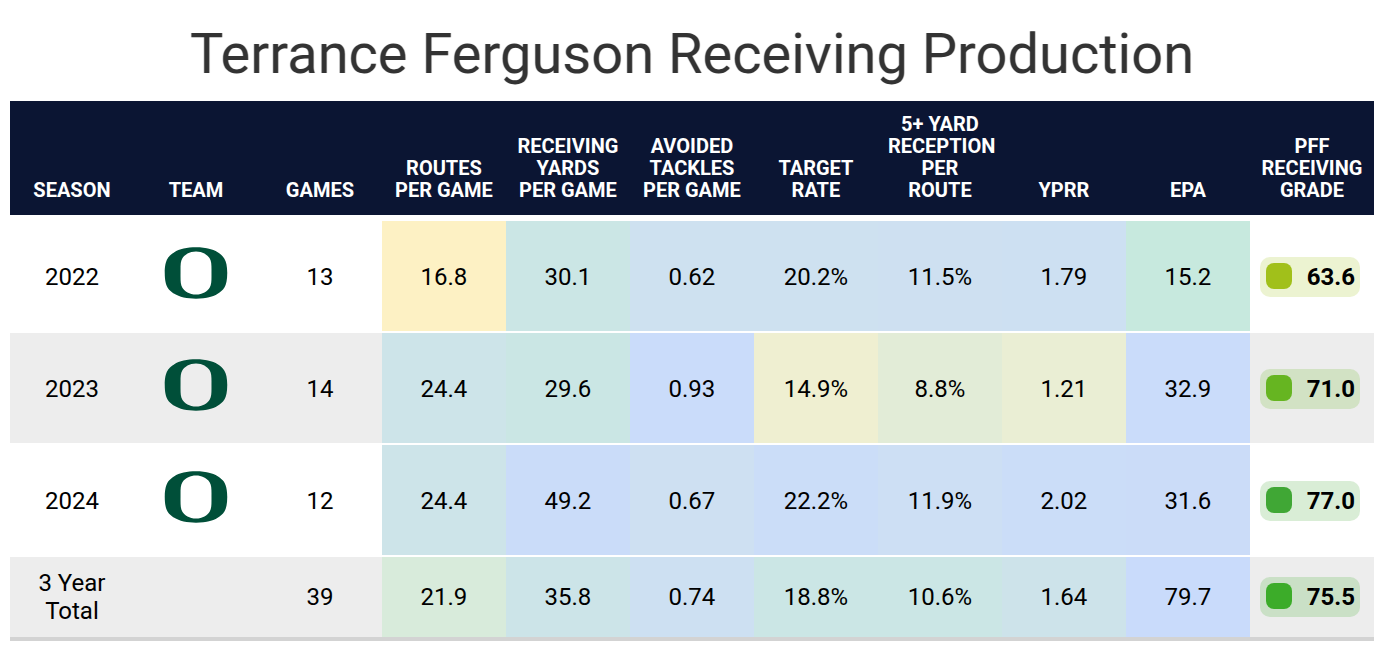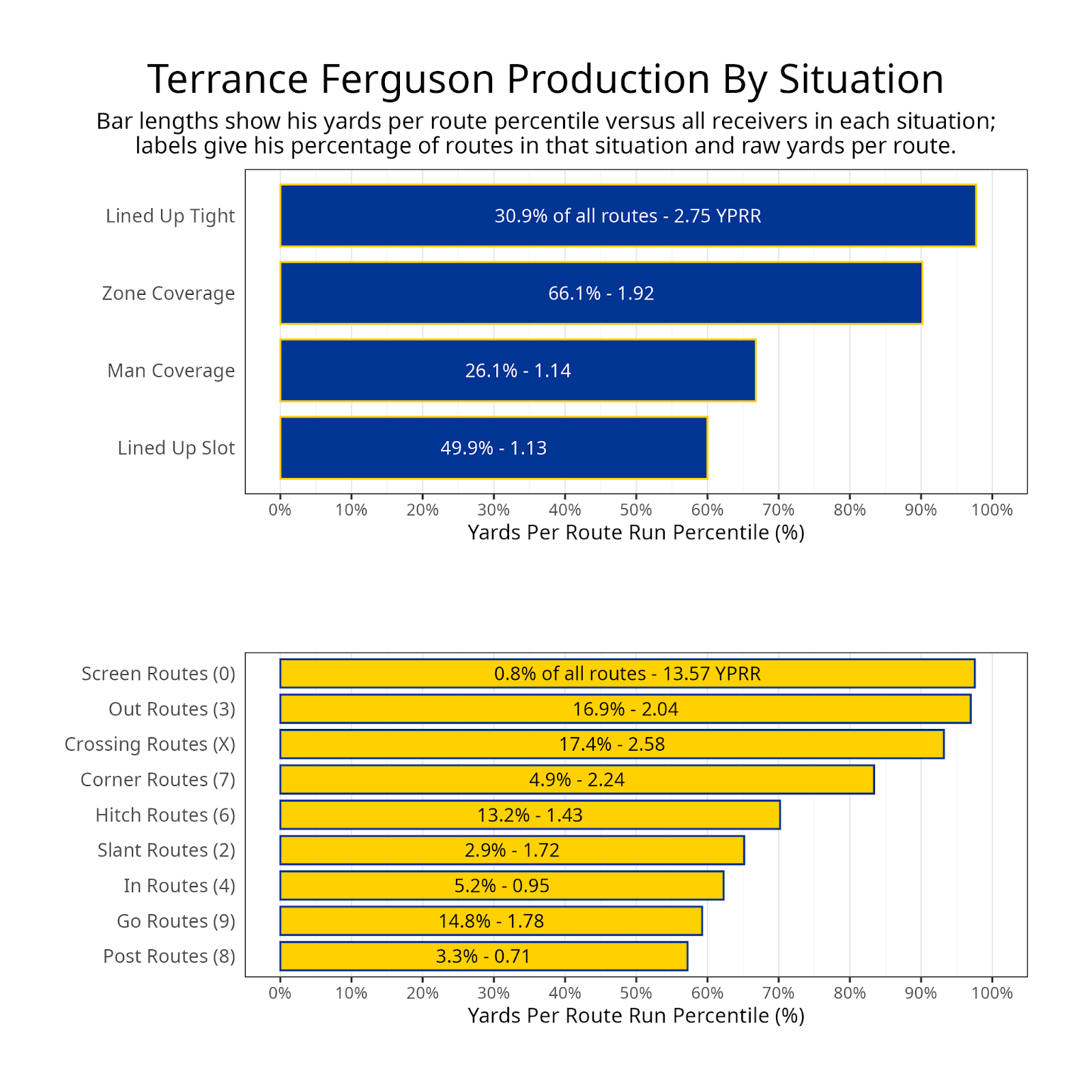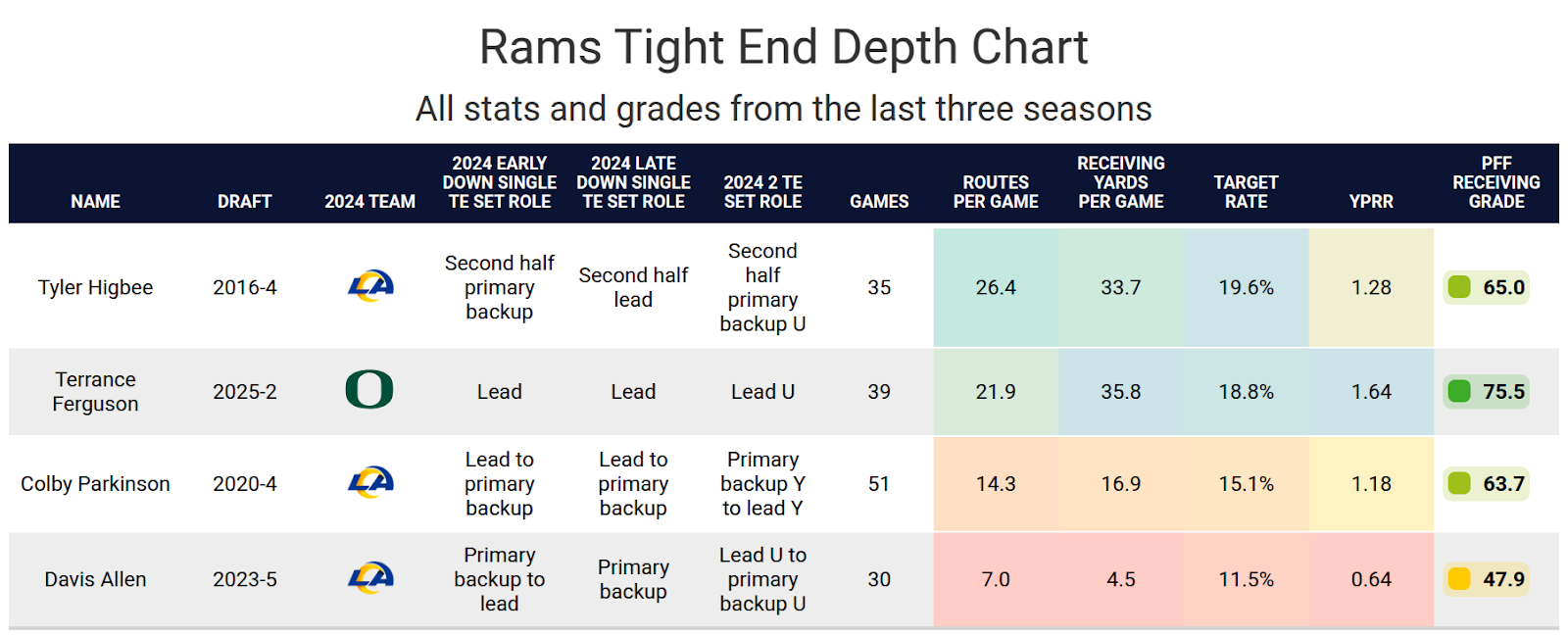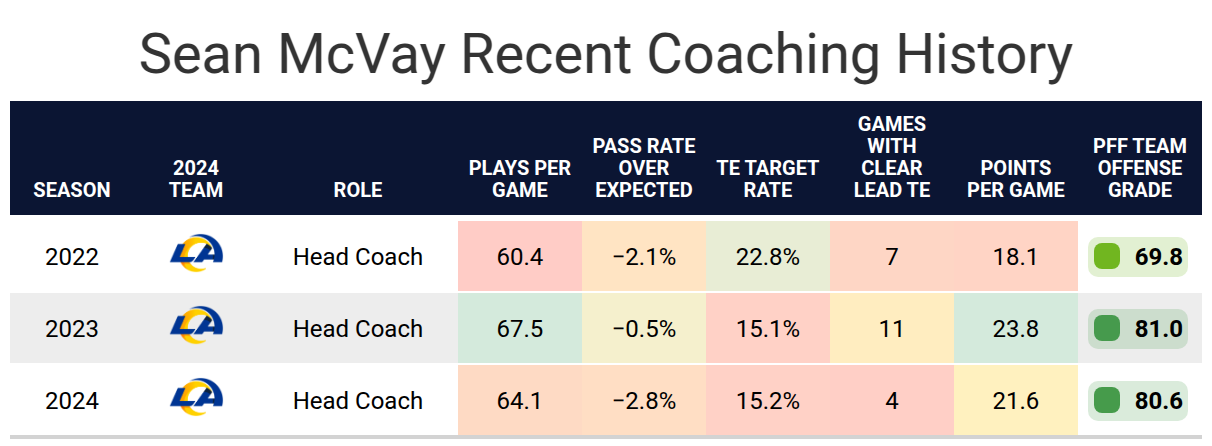- Terrance Ferguson constantly improved: Ferguson’s receiving grade went up by at least six points every season during his career at Oregon.
- Ferguson fits the Los Angeles Rams tight end mold: Ferguson’s measurables are similar to past Rams tight ends, including current Rams starting tight end Tyler Higbee.
- Subscribe to PFF+: Get access to player grades, PFF Premium Stats, fantasy football rankings, all of the PFF fantasy draft research tools and more!
Estimated Reading Time: 5 minutes
PFF’s Fantasy Football Player Profile series delivers the most in-depth fantasy football analysis available for the 2025 season.
Using PFF’s exclusive data, we evaluate player performance, competition for touches and how teammates and coaching staffs will impact each player's fantasy football outlook.
Last updated: 7:15 a.m. Saturday, May 10
Click here for more draft tools:
NFL Draft Big Board | Mock Draft Simulator | NCAA Premium Stats
2025 PFF Draft Guide | Mock Draft Hub | Prospect Data Profiles
Draft Position Rankings
Player performance
Terrance Ferguson has spent the last four seasons as Oregon’s primary tight end. He achieved a noteworthy increase in both his PFF overall grade and PFF receiving grade every season. He was a consistent force in his final season, finishing with a minimum of two receptions and 20 yards in every game he played. His 22.2% target rate and 2.02 yards per route run were on the high end for tight ends.
Ferguson is a more traditional tight end. At 6-foot-5, he plays better when lined up next to the offensive tackles and against zone coverages. While several fantasy-starting tight ends are smaller than Ferguson, players like Travis Kelce, Mark Andrews and T.J. Hockenson have been among the top tight ends for years at 6-foot-5 or taller and 245 pounds or heavier. His speed and general athleticism were all positives for his size. He was among the top tight ends at finding separation, although he wasn’t necessarily great at beating single coverage.
He was generally a low-average depth of target player who did most of his work after the catch. His nine yards after the catch per reception in 2024 were the most for tight ends in the draft class.


Projected role
Ferguson lands with the Los Angeles Rams, where he will likely be the player who eventually replaces Tyler Higbee. Higbee is 32 years old, and the third-oldest lead receiving tight end in the NFL behind Travis Kelce and Zach Ertz. Higbee missed most of last season due to injury, but in his limited time, he posted his best receiving grade since 2019.
Given Higbee’s nine-year history with the team, he probably won't be completely phased out this season. Even if Ferguson is playing very well for a rookie, we could see some kind of time-share between the two tight ends.
From a measurable perspective, Ferguson is very similar to Higbee. All of the Rams' tight ends are on the tall end for the position and can be used interchangeably. Ferguson would just need to beat out Colby Parkinson and Davis Allen for the primary backup tight end job to see some playing time in two-tight-end sets. Both tight ends' playing time declined throughout the season. That was particularly true once Higbee was back, as both of their declines started before Higbee was healthy.
It would likely take an injury to Higbee for Ferguson to have fantasy value this season.


Impact of teammates
Ferguson will have Sean McVay as his head coach. The good news is Ferguson fits McVay’s offense nicely. Their tight end have a low average depth of target, aren’t running many deep routes and aren’t in positions where their passes are contested often. This all fits what Ferguson has experienced in college. The main concern about this role is that McVay’s offenses have been run-first, and the passing game mostly runs through the wide receivers. Higbee averaged 7.2-10.7 fantasy points per game in McVay’s offense in each season since 2019. On a cumulative basis, Higbee peaked at TE5, but on a per-game basis, he’s only been a low-end TE1 at best. Given Ferguson’s measurables and Puka Nacua‘s presence dominating targets, this is likely Ferguson’s ceiling.
Ferguson will catch passes from Matthew Stafford when he is on the field. This isn’t a great fit, as Stafford is best throwing deep and doesn’t throw to tight ends often. This further points to Ferguson being unlikely to have fantasy value this year. However, he could be their quarterback's best friend when they draft a rookie in the next season or two.


Bottom line
Ferguson is unlikely to have fantasy value as a rookie with Tyler Higbee on the team, unless Higbee is injured. Going forward, Ferguson could be a low-end TE1 in Sean McVay’s offense, as long as he can be as good as McVay or a little better.
Footnotes
- Statistics in tables and charts were chosen based on their ability to predict future fantasy performance on a per-game or per-opportunity basis or to describe the player relative to others at the same position.
- “Opportunities” are defined as passing dropbacks, rushing attempts and routes run as a receiver.
- Numbers are provided either by season or based on the past three years. For rookies, only college statistics are included. For non-rookies, only NFL statistics are considered, regardless of whether they played in college within the previous three years.
- As college competition is easier than NFL competition, most rookies are likely to see a decline from their historical numbers.
- Only FBS data is considered for college players and comparisons.
- Kneel-downs are removed from rushing data to provide cleaner quarterback rushing rate statistics.
- The table colors in this article range from blue (indicating good/high) to red (indicating bad/low).
- All percentiles and color codings compare the given player to others with a high sample of opportunities. Generally, the cutoff is one-third of the possible opportunities in the sample. If a player does not meet the threshold, they are still included in the comparison, though their results may appear better or worse than expected due to the smaller, less predictive sample size.
- Information on utilization classifications and their importance can be found here for running backs, wide receivers and tight ends.



 © 2025 PFF - all rights reserved.
© 2025 PFF - all rights reserved.